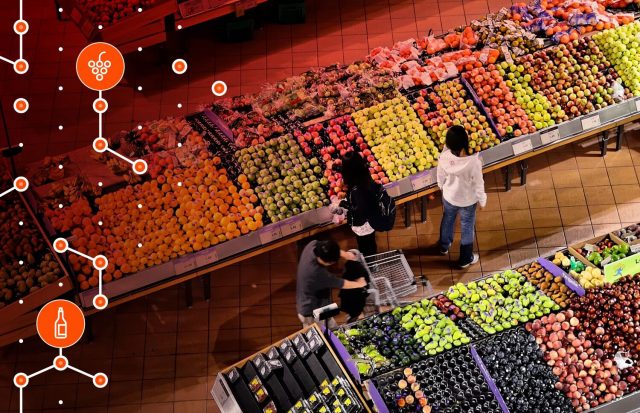
INS Is Transforming The Global Grocery Market Into A Decentralized Ecosystem

Today, Jan 15th, 2018 INS Ecosystem token (INS) gets listed on its first exchanges including Binance and KuCoin. While Binance surpasses 5 million users, having trouble accepting new users at the moment, KuCoin launched recently and it looks ‘serious’ and legit so far. Both exchanges have listed the INS token around $9,7usd per unit.
We are following this one for a couple months now and we can be certain saying that it’s a next-generation blockchain, decentralizing one of the most important markets in the globe. The grocery market.
INS connects grocery manufacturers directly with the consumer being the first global decentralized ecosystem on the field. Backed by solid industrial players including IBM, Goldman Sachs, and Harvard Business School, INS establishes partnerships with 7 of the top 20 FMCG manufacturers, while the total number of INS business partners exceeds a hundred contracts, including companies like Borjomi, Calgon, Vanish, Durex and Dettol to mention a few.
The blockchain technology INS uses is backed by Ambrosus, Civic, Bancor, WINGS, and Blockchain Ventures in order to demonstrate solid and reliable relations between the INS Ecosystem and their strategic partners.

So how it works and why it should concern us?
INS consumers could have access to high-quality groceries cheaper than in retail stores, bought online easily and conveniently, having a plethora of suppliers to choose to buy from. While manufacturers could avoid centralized systems that would generalize their products before it reaches the consumers. Having full control of the pricing and listing, manufacturers can use their own marketing and promotion techniques in order to build a healthy consumer crowd.
After a successful ICO, the INS Ecosystem reached its hard cap (100%) of $41.5m USD and early adopters can already get an x3 to x4 profit as soon as the token hits the markets causing the delusional sense of a ‘drop’. Its price is currently consolidating around $10 USD per unit, having a 50m total token supply, while its current token supply is yet unknown according to CoinMarketCap.com.
Based on their partnerships alone INS announces that they are targeting a $300bn market cap by 2020, which could be double or even triple considering individual investors who have been waiting for the ICO for some time.

Up until recently, we experienced an era of “cryptowars” between monetary platforms using blockchain technology. As time passes and we educate more, integrating this new technology into our everyday life new generation blockchain technologies focus on solving real-life problems on sectors being dragged behind the upcoming industrial revolution.
We can only imagine of a fully blockchain based society, implementing projects like IOTA, Zenome, Walton, and INS into single-use cases. IoT Networks, DNA analysis, blockchain based RFID tags and a global grocery market on blockchain could all work together to make sure we are purchasing quality goods, be assured of the originality, traveling and handling history, current condition, and comparison to a template representing a healthy grocery product.
People still think that blockchain technology might be a ‘bubble’, even after we surpassed the $800bn market cap, according to CoinMarketCap. Banks, Monetary Institutions, and Academics are now doing their research and try to adopt this new technology, or even create their own operative versions of a blockchain as soon as possible.
We are looking forward seeing more 3d and newcomer 4th generation blockchain platforms that will start to focus more and more on global scale social problem solving instead of re-creating a monetary system.
We have made peace with the fact that Ethereum, Dash, and other monetary systems are already established and working properly, upgrading every possible time they have an opportunity to unite physical and digital payments in a decentralized ecosystem. Platforms like Ripple (XRP) or Stellar (XLM) will clearly be major transfer unions in the blockchain world. It’s done. Let us now focus on how blockchain may be used in every possible sector covering a big spectrum ranging from health and pharmaceutical industries to military and engineering projects, including grocery, fashion, education, art and more in-between.
Could INS fulfill its promises and lead the world to its next level as a whole? Let’s stick around and find out together. Let me know your thoughts on this in the comments below.
Reporting for The Independent Republic, Ross Peili